After a bit of a break, I'm back with another Japan post! Bear with me, I only have a couple left to write.
While in Kyoto, we did a cooking class where we made rolled sushi, miso soup, and spinach salad with a roasted sesame dressing. And then we ate it for lunch!
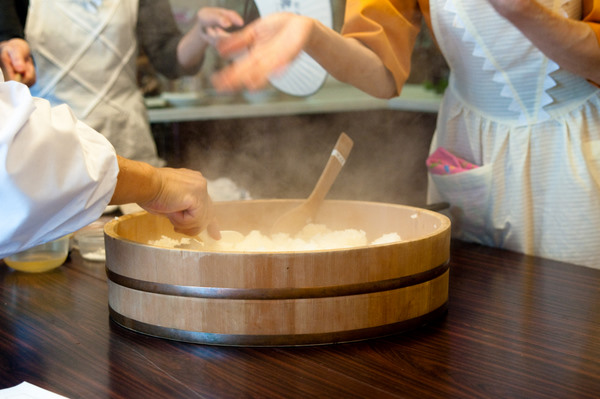
For the sushi, rice had been cooked before we arrived (otherwise it would have taken ages) and once we all sat down, the rice was tipped out into a wooden bowl. A mixture of rice vinegar, water, sugar and salt was poured in and "cut" through the rice in a folding motion (to prevent breaking the grains). The rice was then fanned to quickly cool it.
The rice was left to finish cooling, and next we made dashi. Dashi is a Japanese soup stock, and is a fundamental ingredient for many Japanese recipes, including miso soup. We made one of the most common versions, using dried kelp (kombu) and dried bonito flakes. The kombu is wiped with a damp cloth, and then soaked in a pot with water for at least thirty minutes. After the soaking time, the pot is put on the heat and just before the water boils the kombu is removed. When the water boils, a big handful of bonito flakes was added and the heat turned off. After all the flakes had sunk to the bottom, the liquid was strained and was ready to use.
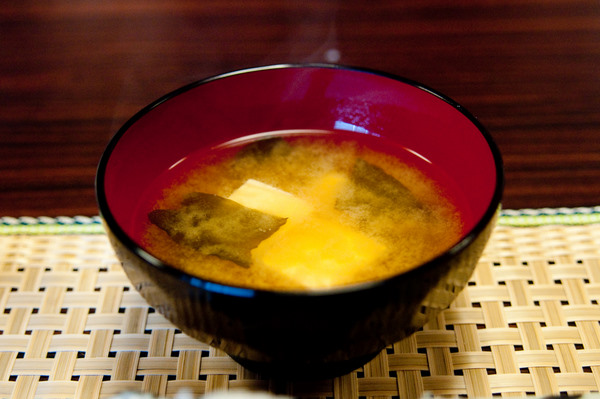
The dashi was used to make miso soup. We were given three types of miso to taste - white, yellow and brown. It was interesting to taste the difference in flavour between the three misos. The darker the miso, the more salty it was. The white had a touch of sweetness to it, and the yellow was less salty than the brown. I think we used the brown to make our miso soup, which also had seaweed and diced tofu. Yum.

After the miso soup, we moved on to rolled egg omelette (tamago) for our sushi rolls. This was cool! I had always wondered how the egg was rolled up so nicely. To make the tamago, several eggs were beaten lightly with a bit of dashi, soy sauce, mirin, salt and sugar. To produce the rolled layers, a small amount of egg was added to a well oiled rectangular pan - just enough to cover the bottom. The pan was tilted to cover the bottom evenly with egg.
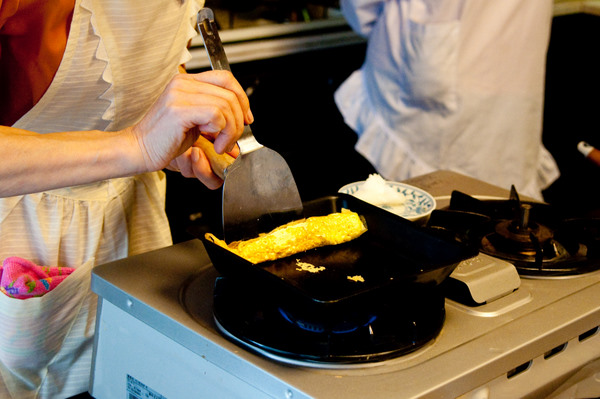
When the egg was nearly set, the egg was rolled up towards the front of the pan using a spatula.
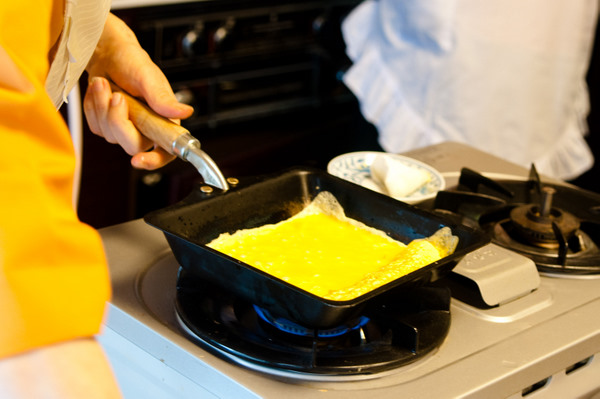
The rolled up egg was then pushed to the back of the pan, and the empty part of the pan was re-oiled. Then another layer of egg was poured in. The rolled omelette was lifted up with chopsticks and the pan was tilted to allow the uncooked egg to flow underneath it.
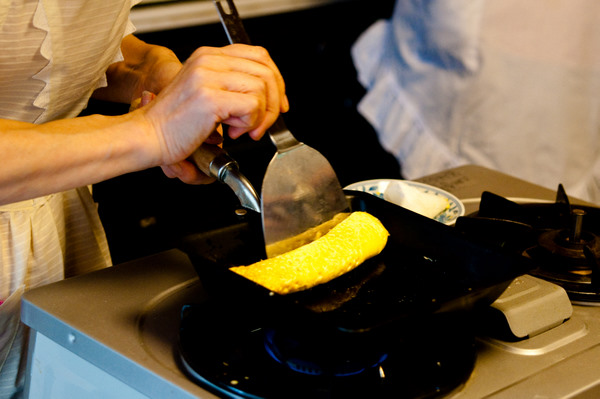
When the uncooked egg was nearly set, the omelette was rolled towards the front again. The remaining egg mixture was cooked in the same manner, with the rolling process repeated to create a single roll with many layers. I had a turn at rolling the omelette, and it was much easier than it sounds in this somewhat convoluted explanation!
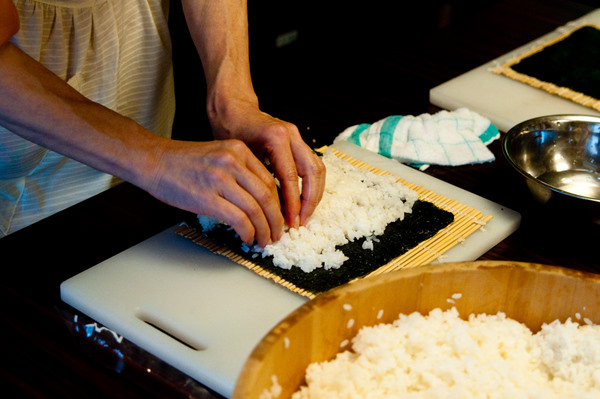
Next, it was time to assemble the sushi rolls. A layer of the prepared sushi rice was spread on to a sheet of nori (dried seaweed) on top of a bamboo mat, leaving a strip clear of rice.
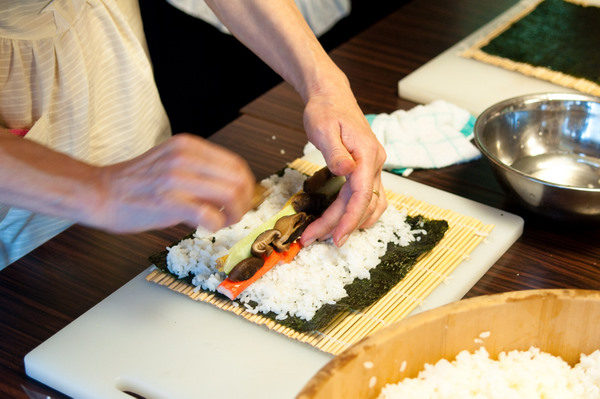
Fillings were placed in the middle of the rice. In our rolls, we had shitake mushrooms, our tamago, and crabstick (it's not cool, but I love it).
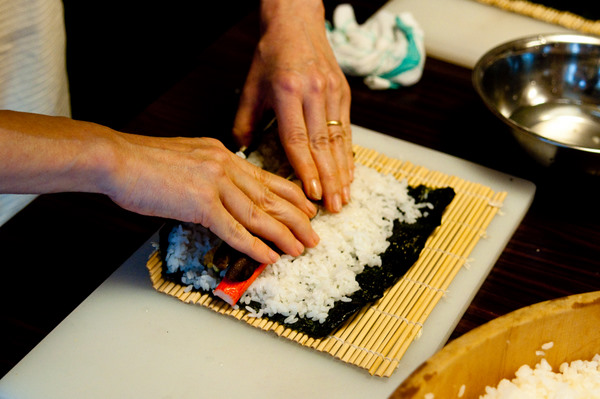
The strip of nori that was clear of rice was slightly wetted. Then, holding the fillings down, the sushi was slowly rolled up.
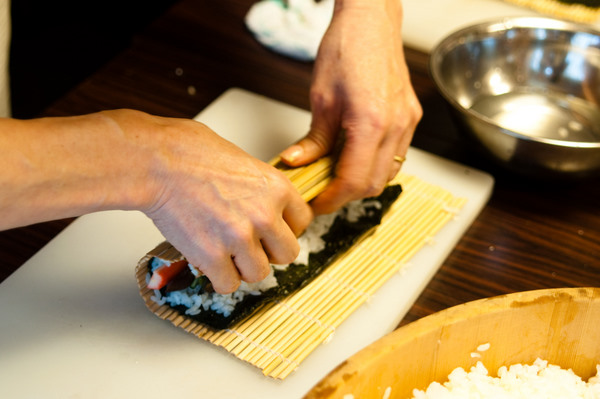
It was all rolled up tightly, with the bamboo mat being used to press it all together and shape it into a cylinder.
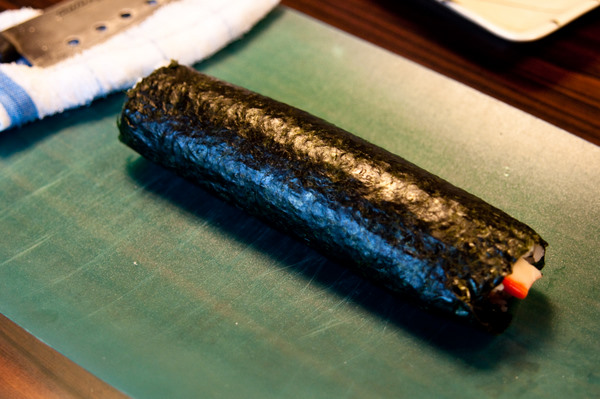
We got to roll our own sushi. This was Alastair's one.
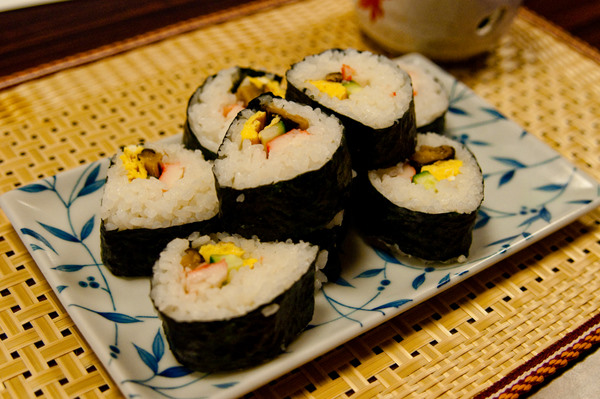
And Alastair's one all cut up. Pretty good for someone who not only has never rolled sushi before but also doesn't cook!

And here's mine!

And here's my sushi roll cut into pieces. I had never made rolled sushi before - I was pretty pleased with it. It was easier than I thought it would be.
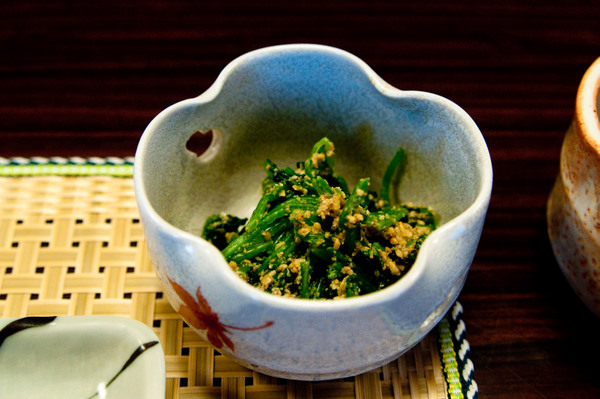
Along with the miso soup and sushi rolls for lunch, we also had a small salad of spinach with roasted sesame dressing. Oh, and tea and pickles (of course). The spinach was very simple but delicious. The spinach was boiled and cut into small sections, and the dressing was made with ground roasted sesame seeds, dashi, soy sauce and a bit of sugar.
We had a great time at the class, although next time I would like to make something more advanced. Even Alastair enjoyed it - perhaps I could get him to like this "cooking thing" after all!
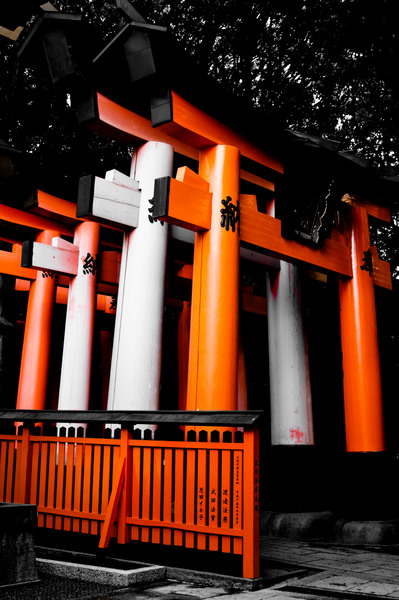
After the cooking class, Alastair and I headed off to see the Fushimi Inari shrine, which is a Shinto shrine that is dedicated to Inari, the god of rice, sake, prosperity and in modern times, business. It's one of Kyoto's oldest shrines and is noted for the thousands of small torii gates that line the long path up the hill behind the shrine.

The torii are donated by businesses, and it's a very striking place to visit. It takes about two hours to walk the whole trail, so we didn't make it to the end. At first we didn't realise how far it stretched, and Alastair started counting all the gates. With 10,000 of them, it would have taken a while!
That's just about it for the Japan posts - I may have a couple of random bits and pieces that I'll post, as well as one or two about Hong Kong, China and Macau. Thanks for sticking with them. I have loved writing them and remembering all the great food we ate!
(And if you would like a recap, all the Japan posts can be found here.)


